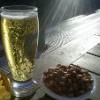Quote: Original post by Don Carnage
@LessBread: you make good points here, I agree. I can well imagine that some if not all these scientists are biased as to what conclusions they'd like to draw, as in "explosives were used". But since this is the largest university in Denmark, I think bad science would ruin your career. So I'll accept their analysis of the chemical subject, but not automatically their speculations on it's use or origin.
I wish they'd have provided some figures with estimates on the volume of stuff found vs. estimate of how much dust was produced, to at least make the idea plausible, but I guess that would make the chemical article less serious and credible.
I also had to look up the 100 nm scale an extra time, that's really small!
I'm not doubting that the scientists found what they claim to have found, I'm just saying that it's a huge stretch to say that the presence of microscopic quantities of iron oxide (rust) and aluminum in a dust sample is indicative of a thermite reaction. If they found aluminum oxide and elemental iron, products of a thermite reaction, in similar samples of dust, that wouldn't confirm a thermite reation either. If you cut your finger on a can of soda pop, between the iron in your blood and the aluminum in the can you'd find more iron and aluminum oxide than what this study claims.
To put these claims into perspective another way, dust particles max out in size around 500 micrometers. That's 1e−6 meters. The width of human hair is 1e-4 meters, red blood cells are almost 1e-5 meters in diameter (source). Furthermore, "1000 dust particles per square centimeter settle on domestic surfaces every hour." Combined with the prevalence of naturally occurring mineral dust, "mainly constituted of the oxides (SiO2, Al2O3, FeO, Fe2O3, CaO, and others)", it's reasonable to assert that there's probably a lot more iron oxide and aluminum oxide in the dust built up around the power supply of a typical personal computer than what was found in these samples. In spite of that potential evidence, no one would take it seriously as evidence of a thermite reaction on your desktop.
One last comparison. The normal concentration of uranium in soil is 300 μg/kg to 11.7 mg/kg. Taking the low end of that range, that would be 3e-4 grams of uranium per kilogram of soil. Applying a molar mass of 238.02891 grams, that's 1.2603511060904324604939794918189e-6 moles or approximately 759,001,306,605,991,684 atoms (if I did the math correctly). That is at least ten orders of magnitude more atoms than were involved in these samples. It would be absurd for anyone to point to the soil in your backyard as evidence that you were engaged in the production of a weapon of mass destruction, but there's more evidence to support that assertion than the evidence presented by this paper in support of the assertion that the WTC was taken down with a thermite reaction.






